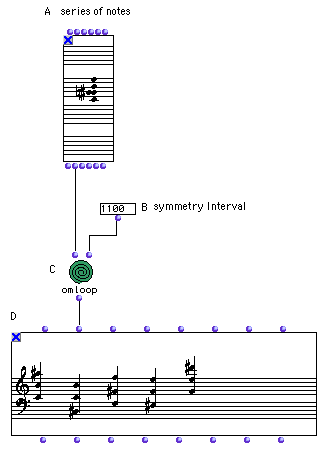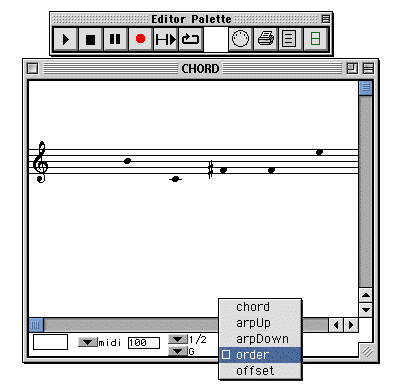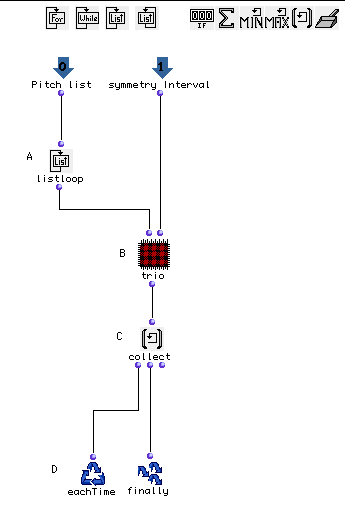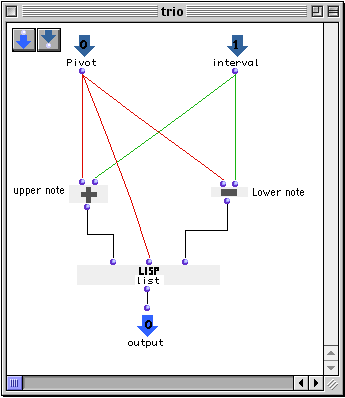OpenMusic Tutorials
Prev| Chapter 5. Flow Control II: Loops| Next
Tutorial 16: Introduction to omloop II
Topics
Another example of using omloop with
listloop
Key Modules Used
The Concept:
Using the omloop module, we will add an upper and a lower
harmony note to each note of a melody at a set interval.
The Patch:

Edit your series in the Chord object (A) after setting it to order mode.

Choose an interval to use for the harmonizing. 1100 midics represents a major seventh.
Add two inputs to omloop before opening its editing window (with option-
->. Then omloop and name these inputs as shown below.
(Again, naming inputs is not necessary, but it is practical, especially when
using complicated patches with many variables. Documenting your patches by
naming inputs and adding documentation in the input boxes is a good way to
keep track of data and patch functionality).

In order to enumerate each element of the list coming from the
Chord, we use listloop (A). Now create a
red patch (B). Notice that whenever a patch is created within a patch, this
patch appears as a red patch. Open it, add inputs and an output:

Coming into _pivot_ , we will have an different enumerated note from the
melody at each repetition of the loop, while ‘interval’ is the interval we
chose, in midicents (in our example we chose 1100 midics). The
list function creates a new list by grouping its inputs
together and slapping on a new pair of parentheses. This is different than
x-append, which merges two lists into one. Compare the two.
list will create a list with three midics, the first and last
being a major seventh above and below the middle.
The results will be collected using collect and sent to the
output finally (D). The output of omloop
will thus be a list of chords (a list of lists of midics, i.e. a tree of
midics) You can listen to the result in the Chord-seq
which is connected to omloop’s output.
| Prev | Home | Next |
|---|---|---|
Tutorial 15: Introduction to omloop I |
||
| Up | Using Musical Objects II |